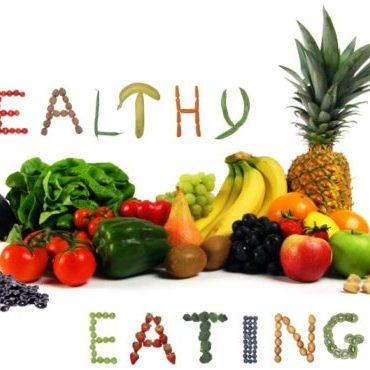 All your nutrition questions are answered!
All your nutrition questions are answered!
Over the past few years, I have noticed I often feel uncomfortably full after I have eaten a big meal. Does our digestion change as we get older?
Yes, it is true. Just as our muscle mass declines with the passing years, our digestive tract loses muscle tone. We digest food through a series of muscle contractions, so as these muscles weaken, this process becomes less effective, slowing digestion. Other common age-related factors that can have an impact on our digestion include being less physically active, drinking less water (as our thirst response decreases with age) and taking more medication. Avoiding rich, fatty foods can also help. We digest these foods at a slower rate, which can leave us feeling overfull and bloated. It is a good idea to have a light dinner, such as salad, soup or a smaller meal than usual, and to eat it slowly making sure to chew each mouthful well. To minimise belly bloat, include a little gentle exercise in your day, especially after main meals. Some older adults suffer from constipation, which often causes abdominal discomfort. To keep your bowels regular, eat plenty of fibre-rich whole grains, fruits and veggies. Water is also essential to a healthy bowel, so aim to drink plenty – at least eight glasses a day.
If you are concerned about your digestive health or have recently experienced a change in your bowel habits, see your doctor.
I can’t eat dairy, but I would like to keep my calcium intake high. Can you recommend any snacks that are high in calcium?
Happily lots of snacks suit your needs. For a portable snack, pack a small zip-lock bag of unsalted nuts or seeds. A 30g handful of almonds (about 20 nuts) contains the most calcium(75mg), followed by brazil nuts (45mg per 30g or 10 nuts). Both pistachios and sunflower seeds contain 33mg per 30g. To boost the calcium content even add 2 or 3 dried figs. Adults need 1000mg of calcium per day, and older adults require up to 1300mg a day, so top up with highly satisfying snacks. In the morning, use calcium-fortified soy milk in coffee, or whiz up a fruit-based soy smoothie. In the afternoon, go for oily fish with edible bones, such as sardines or pink salmon. A small can of fish on a few wholegrain crackers provides up to 500mg of calcium. Forgoing dairy foods because of lactose intolerance? Bear in mind that many sufferers can tolerate a small tub of yoghurt (and its calcium) without suffering from any related symptoms.
 I am a regular at cafes and like to have a sweet treat with my coffee. What are the best options – fruit fillings, custard fillings or something like a Florentine with nuts?
I am a regular at cafes and like to have a sweet treat with my coffee. What are the best options – fruit fillings, custard fillings or something like a Florentine with nuts?
A sweet treat doesn’t always have to be a guilty one; just keep in mind a few basics. The downfall of many sweets is the pastry since it is mostly butter and sugar – so avoiding pastries like croissants and danishes can help limit the energy overload. The best sweet fillings should have unprocessed, single ingredients – so you are on the right track with fruit and nuts. If the filling is made from lots of processed ingredients, like chocolate or cream, you are better off without it. Some good options are whole-brain muffins, nut clusters or small fruit tarts. Better yet, try thinking outside the box (or the cake display) by ordering raisin toast with low-fat ricotta or poached fruit with muesli.
What is carb loading?
In order to work, your muscles use glycogen (stored carbohydrate) for fuel. Carbohydrate loading is a technique used by endurance athletes that involve changes to diet and exercise to maximise glycogen stores, so they can work out longer at an optimal pace. There is more to it than gorging a huge bowl of pasta the night before a race. When carbohydrate loading, athletes eat a high carbohydrate diet (7-12g per kilo of body weight) for 3-4 days, combined with a reduced training schedule. Not everyone who plays a sport needs to carbohydrate load; it is only for those who regularly exercise at a moderate to high intensity for more than 90 minutes. Common difficulties with carb-loading include cutting out fibre-rich foods, choosing compact carbohydrates (like cordial, sports drinks, jam, and tinned fruit) and eating too many high-fat foods.
I know sausages are high in fat, but when I prick and precook them, hardly any fat comes out. Does this mean they are lower in fat?
With some reduced-fat sausages, you may not see fat coming out when you pre-cook them. Or the sausages may contain an ingredient that emulsifies (binds) the fat to the other ingredients. Some sausages may be mechanically emulsified, which means the ingredients have been blended into small particles in a way that binds the mixture together. Pre-cooking sausages is always a good idea to help ensure they are cooked through without being charred. Sausages were, traditionally, high in fat, but these days, some can have as little as 6g of fat per 100g (i.e. 6% fat). Others are over 20 % fat, and as a rule of thumb, about half of that is saturated fat.

